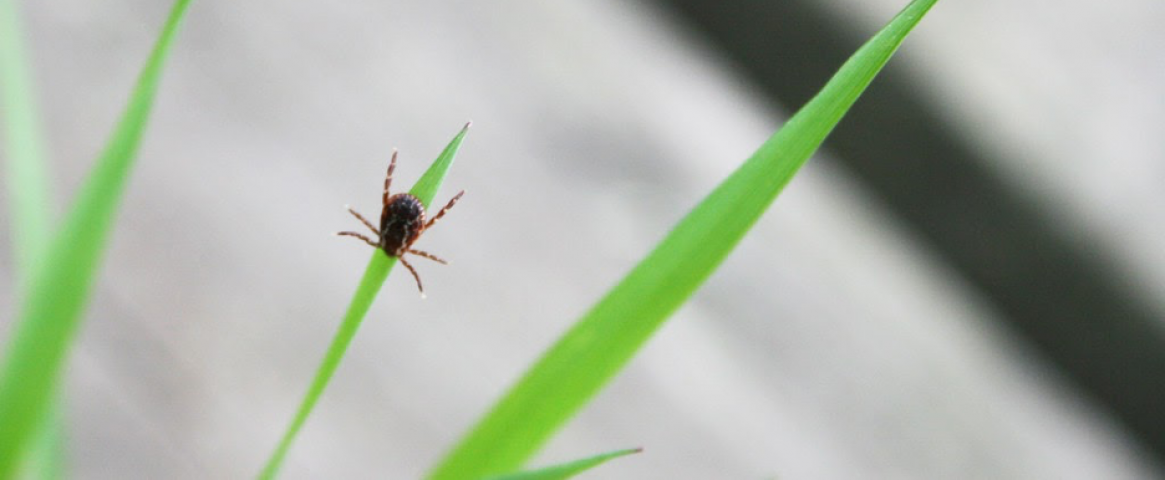By Luyi Cheng
The summer weather is warming, and people are venturing to spend more time outdoors. While Covid-19 is at the forefront of many minds this year, ticks — tiny, blood-sucking parasites that can often evade detection — remain a concern across parts of the U.S.
But a study published in June in the Journal of Medical Entomology finds a patchwork of tick management programs across the U.S. that are often ill-equipped to deal with regular surveillance of ticks.
The study was an attempt to understand who is involved in tick surveillance work and what their objectives are, explains Emily Mader, the program manager of the Northeast Regional Center for Excellence in Vector-Borne Diseases in Ithaca, N.Y., and lead author of the study.
Tick surveillance plays an important role in helping limit diseases such as Lyme. The Center for Disease Control estimates, for instance, that there are 300,000 cases of Lyme disease in the U.S. every year, and the bulk of them are diagnosed in the summer months. And while early treatment with antibiotics can help infected individuals relieve their symptoms — headaches, fatigue, and a telltale bullseye rash — some people experience more severe symptoms such as joint and nerve pain.

The fact that the study’s authors found fragmented programs could pose a problem when tackling tick-borne diseases. The study reported, for instance, that these programs could range from providing educational resources to also actively culling tick populations. Having different types of programs to tackle tick surveillance and control can also make it difficult to understand the state of tick-borne diseases in the U.S. and how tick management could be improved.
“We haven’t until this moment really known what the picture of tick surveillance and control programs was,” said Neeta Connally, a medical entomologist at Western Connecticut State University in Danbury, Conn., who was not involved in the study.
To learn more about how the different management programs operate, Mader and her team surveyed 140 vector-borne disease professionals at local-, state-, and county-level public health and control agencies across the U.S. The respondents included not only health departments and mosquito control districts, but also academic researchers and those working in local agriculture departments.
Gaps in management were evident from the get-go. “Less than half of the jurisdictions are really doing what we call an active surveillance,” said Nohra Mateus-Pinilla, a veterinary epidemiologist at the Illinois Natural History Survey based at the University of Illinois in Urbana-Champaign, and a co-author of the study.
That’s because active surveillance involves routinely monitoring ticks. Program personnel go out into their designated regions and collect ticks, consistently recording changes in population and infection rates. “It is intense work,” Mateus-Pinilla said, which may explain why so few departments do it.
In contrast, about two-thirds of programs seemed to engage in passive surveillance, where members of the public send in ticks for identification. Passive surveillance can help departments gather information about tick presence, but can be sporadic and not capture details on the prevalence of diseases, said Mader. The data may also be unreliable. Mader that someone who finds a tick stuck to their pant leg hours after it latches on might not know where the tick actually came from.
Beyond surveillance, only about 12% of survey respondents reported doing some form of tick control to reduce or eliminate the insects. Since much of existing tick control happens on an individual basis, such as when homeowners spray their yard with pesticides, according to Mader, “We knew that it wasn’t going to be an outrageously large proportion of our respondents,” she said.
A minority of programs also reported testing ticks for disease-causing pathogens, such as the bacteria that cause Lyme disease or lkviruses that cause other illnesses.
“I think the barriers that were identified in the study are really important,” Connally said. “[The study] provides information we previously didn’t have, so that’s a nice first step towards maybe a more widespread effort to implement standard surveillance.”
But that widespread effort is going to require action through state support, especially since the respondents consistently stated lack of funding as a barrier to their program goals such as sustained tick surveillance and pathogen testing. Unless there’s “an influx of resources,” including to support more trained personnel, infrastructure around tick surveillance isn’t going to improve, Mader said. “Hopefully this kind of information does reach the ears of those who can help make the decisions to support these programs,” she said.
Luyi Cheng is a biology Ph.D. student at Northwestern University and a freelance science writer. She has previously written for Massive Science and is a contributor for SciPol.org. See more of her work at www.luyicheng.site or follow her on Twitter @luyi_cheng.
This story was produced as part of NASW's David Perlman Summer Mentoring Program, which was launched in 2020 by our Education Committee. Cheng was mentored by Shraddha Chakradhar.






